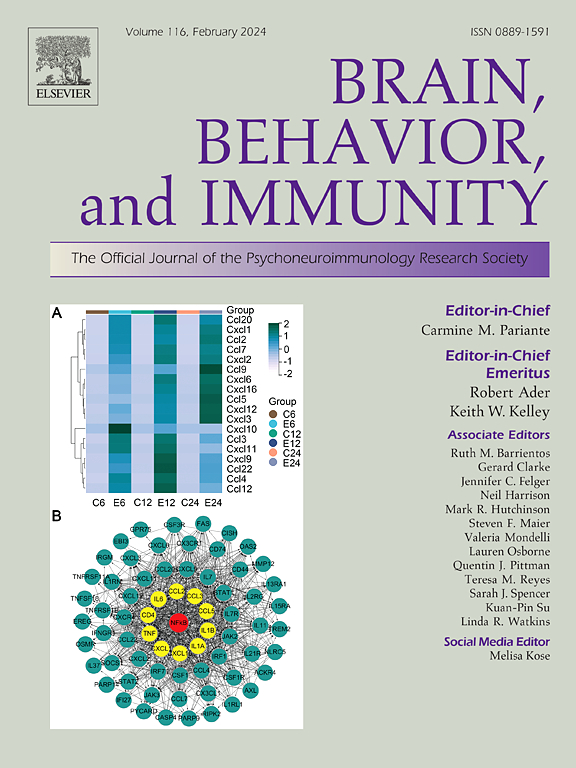Patient-derived monoclonal LGI1 autoantibodies elicit seizures, behavioral changes and brain MRI abnormalities in rodent models
IF 8.8
2区 医学
Q1 IMMUNOLOGY
引用次数: 0
Abstract
Objective
Limbic encephalitis with leucine-rich glioma inactivated 1 (LGI1) protein autoantibodies is associated with cognitive impairment, psychiatric symptoms, and seizures, including faciobrachial dystonic seizures (FBDS). Patient-derived LGI1-autoantibodies cause isolated symptoms of memory deficits in mice and seizures in rats. Using a multimodal experimental approach, we set out to improve the validity of existing in vivo rodent models to further recapitulate the full clinical syndrome of anti-LGI1 antibody mediated disease.
Methods
A monoclonal anti-LGI1 antibody (anti-LGI1 mAb) derived from a patient’s CSF antibody-secreting cell was infused intracerebroventricularly (ICV) into rats and mice for one or two weeks, respectively. Cellular excitability of CA3 pyramidal neurons was determined in hippocampal slices. Structural changes in mouse brains were explored using MRI. Antibody effects on behavior and brain activity of rats were studied using video-EEG.
Results
Anti-LGI1 mAbs augmented the excitability of CA3 pyramidal neurons and elicited convulsive and non-convulsive spontaneous epileptic seizures in mice and rats. Mice displayed a hypoactive and anxious phenotype during behavioral testing. MRI revealed acutely increased hippocampal volume after ICV anti-LGI1 mAb infusion. Video-EEG recordings of juvenile rats uncovered two peaks of seizure frequency during the 7-day antibody infusion period resembling the natural progression of seizures in human anti-LGI1 encephalitis.
Interpretation
Our data strongly corroborate and extend our understanding of the direct pathogenic and epileptogenic role of human LGI1 autoantibodies.
求助全文
约1分钟内获得全文
求助全文
来源期刊
CiteScore
29.60
自引率
2.00%
发文量
290
审稿时长
28 days
期刊介绍:
Established in 1987, Brain, Behavior, and Immunity proudly serves as the official journal of the Psychoneuroimmunology Research Society (PNIRS). This pioneering journal is dedicated to publishing peer-reviewed basic, experimental, and clinical studies that explore the intricate interactions among behavioral, neural, endocrine, and immune systems in both humans and animals.
As an international and interdisciplinary platform, Brain, Behavior, and Immunity focuses on original research spanning neuroscience, immunology, integrative physiology, behavioral biology, psychiatry, psychology, and clinical medicine. The journal is inclusive of research conducted at various levels, including molecular, cellular, social, and whole organism perspectives. With a commitment to efficiency, the journal facilitates online submission and review, ensuring timely publication of experimental results. Manuscripts typically undergo peer review and are returned to authors within 30 days of submission. It's worth noting that Brain, Behavior, and Immunity, published eight times a year, does not impose submission fees or page charges, fostering an open and accessible platform for scientific discourse.

 求助内容:
求助内容: 应助结果提醒方式:
应助结果提醒方式:


